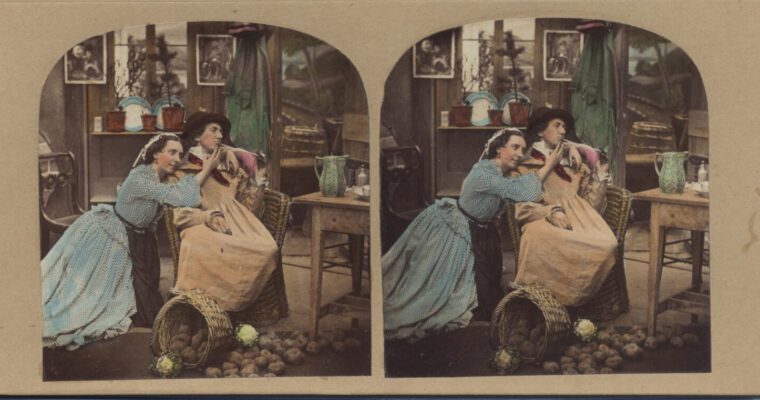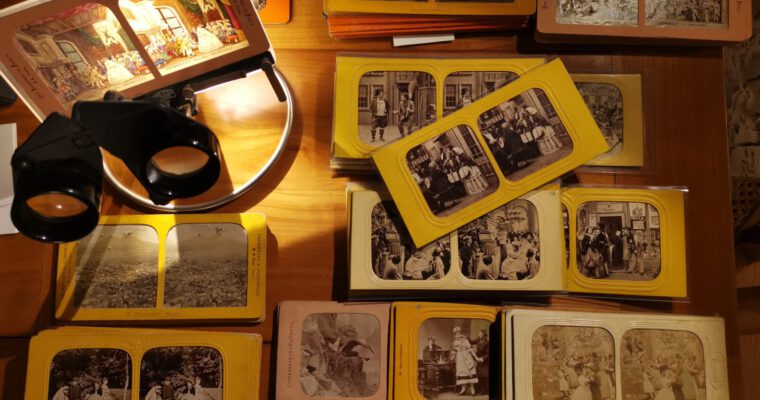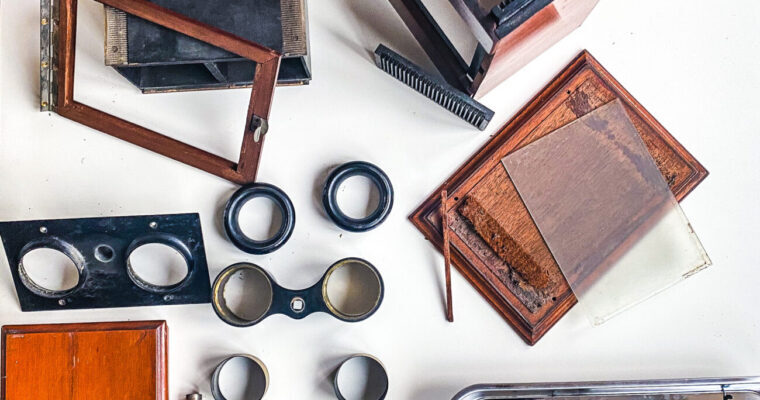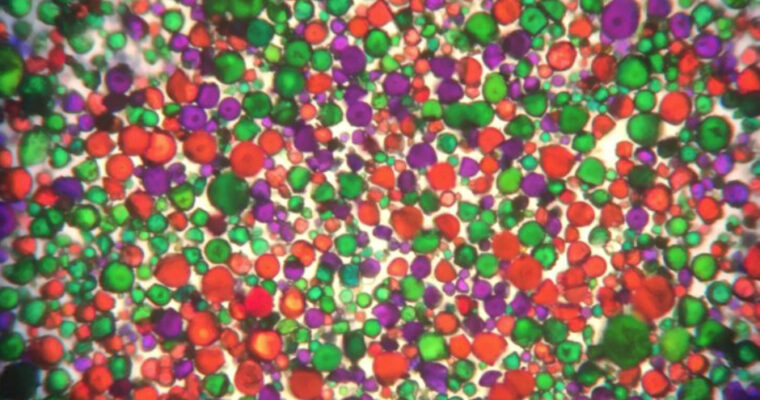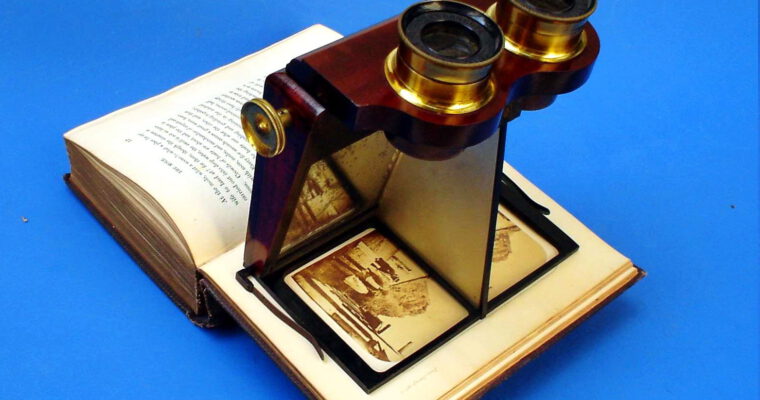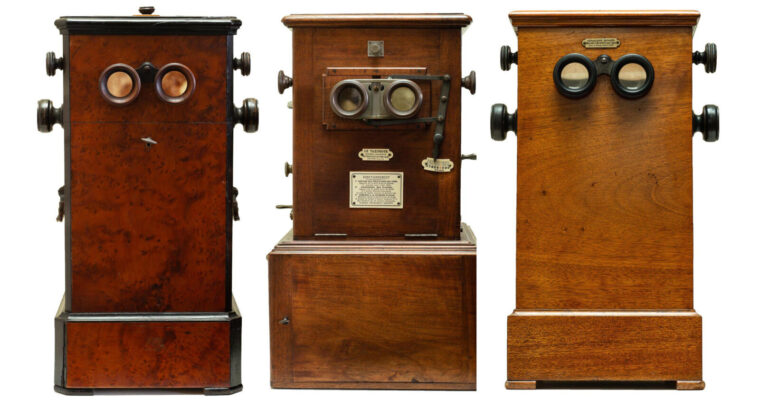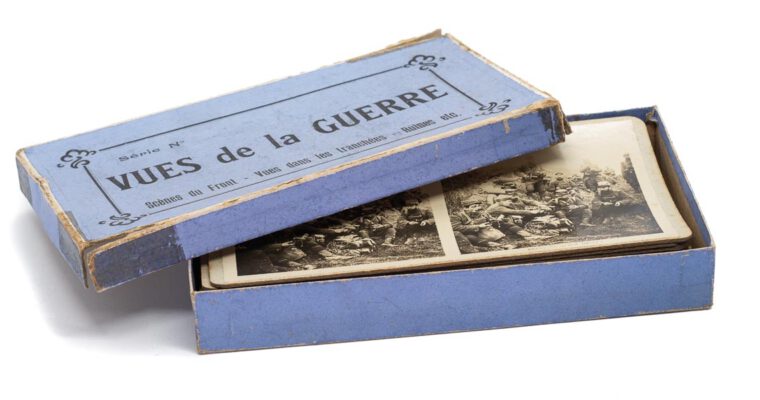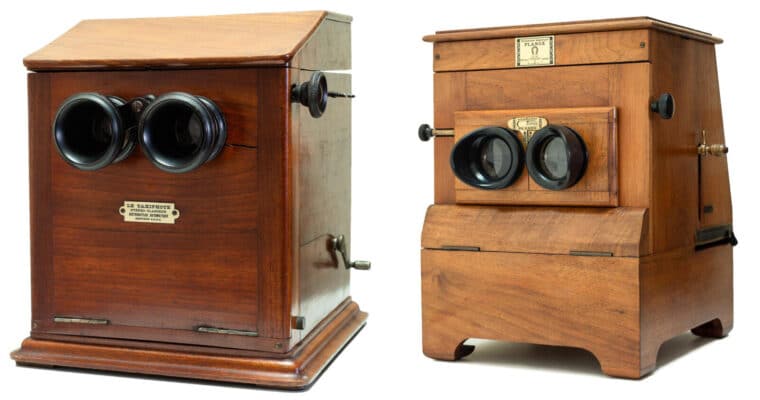Collecting
The Magic of Hyper Stereos
The viewing experience of stereo photos sometimes is just as if you could step right into the scene. But the flatness of distant landscapes is an undeniable drawback for the stereoscopic effect.
Read about the reasons and methods to enhance the depth in such stereo photos. Look at historic glass slides as well as at modern drone stereo photos.
The Nevers Collection
The story of 21 stereo glass negatives from the early stages of The Great War in Nevers, France.
Michael Burr’s Favourite Model
Michael Burr was one of the most prolific photographers of staged genre stereoviews in the Victorian era. Like most photographers Burr had his favourite models who make regular appearances in his tableaux. One of them, and perhaps the most relevant to readers of this article, appeared as the wife of a stereograph enthusiast who, while her husband is occupied in scrutinising the latest offerings from the travelling stereo salesman, takes the opportunity to flirt with the top-hatted purveyor of 3D delights.
“Tissues” or “The Happiness of the Collector in Collecting”
What to do in 2020, these difficult times for passionate collectors? Read about Thomas Asch’s newest acquisition, get some historical background information and look at the different kinds of stereoscopic Tissues.
Mid-Century 35 mm Filmstrip Stereo Viewers
3D filmstrip viewers are a family of stereo viewers that gained prominence in the early 20th century. In fact, it was a small filmstrip viewer called Tru-Vue that re-introduced 3D viewing as a mid-century pastime, made it more affordable than earlier stereoscope sets, and paved the way in the hearts and minds of consumers for the popular 3D reel & card viewers that would come later. For this reason, Tru-Vue has often been called “the missing link” in stereoscopy. Explore some of the most interesting filmstrip stereo viewers here.
Restoring Stereoscopic Antiques
When considering restoration, I always ask myself one very simple question: What would this stereoscope look like today if it had never disappeared from its owner’s living room, but had been cherished and cared for continuously for over 100 years?
Negative Notions: Proper digitization of stereoscopic negatives for parallel viewing
Stereoscopic negatives are, by nature of their creation, trickier dragons to conquer than are those made by traditional two-dimensional cameras. They are vicious chimeras, products of distinct photographic and stereographic processes, and difficult to tame. Read here how to do it.
The Autochrome project
The Autochrome was one of the principal ways of producing colour photography in the early 20th Century. The Autochrome Project is a personal endeavour to produce a workable method of recreating the Lumiere Autochrome.
An Abbreviated History of Stereo-Pair Illustrated books
Every now and then you can find stereo illustrated books that incorporate a viewer, to view the printed stereo pairs, rather than anaglyphs. This basic concept and format turns out to be quite old. Read more about it in David Starkman’s abbreviated history of Stereo Illustrated books.
Collecting Stereoscopes
In this post, I will talk about collecting antique stereoscopes for glass stereoviews from the period 1850 to 1930. Some tips from my previous post can also be applied to stereoscopes, so I recommend to read this post first. However, collecting stereoscopes comes with some additional challenges that I will address now.
Collecting Stereoviews
This is the first post of a two-part series about collecting stereoscopy antiques. This post is about collecting stereoviews. André tells about his experiences based on two years of searching and bidding on glass stereoviews of the First World War, but in general these tips apply to all themes.
A Multiview Stereoscope Comparison
Multiview stereoscopes are table stereoscopes that are capable of showing multiple images in one viewing session. These viewers use a slide tray or chain in which the stereoviews are placed. By turning a crank or pushing down a lever, the images are displayed one by one.



